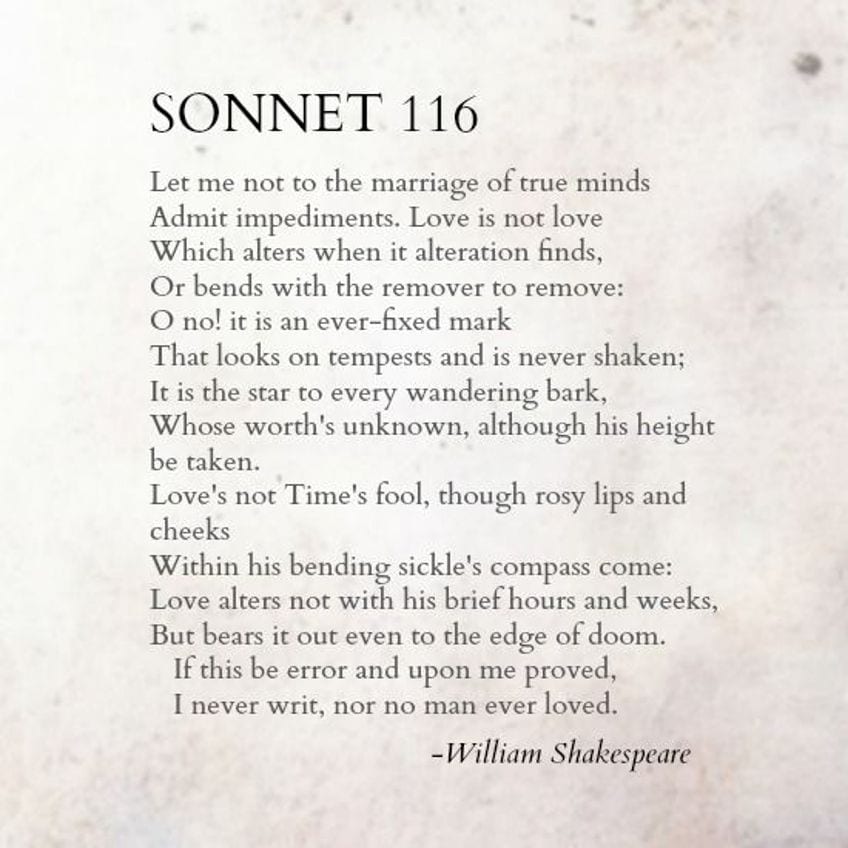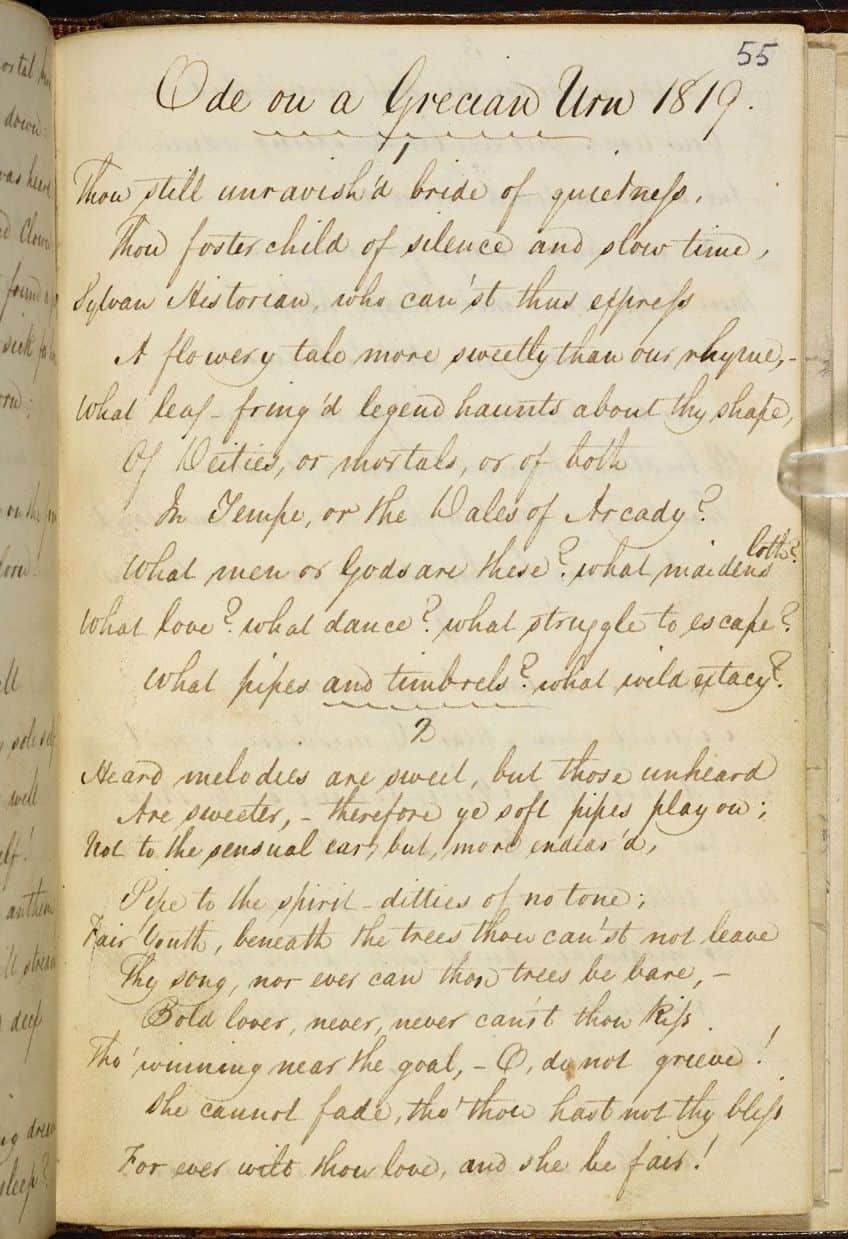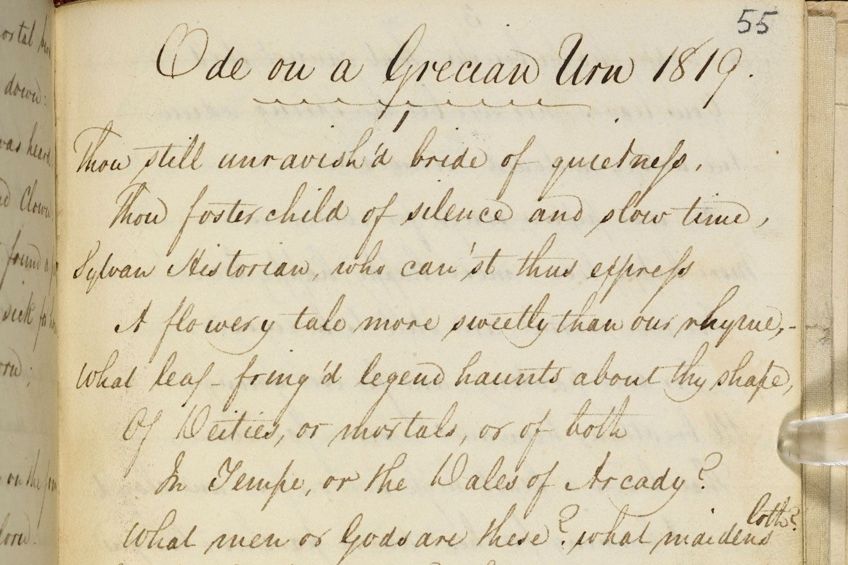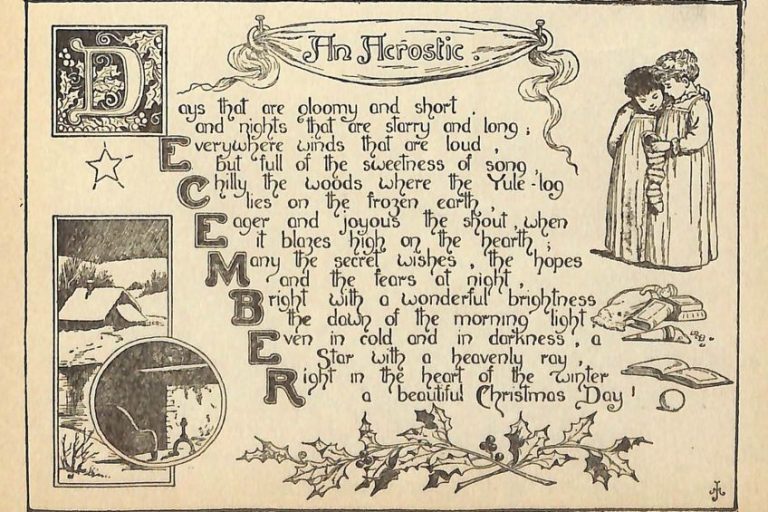Lyric Poetry – Discover Poems With a Musical Quality
There are so many different examples of poetry in the world that fall into so many formal and content categories. Today, we are going to examine one of the most generalized examples of this medium: lyric poetry. We will explore this type of poetry by examining the history of the form, some of its primary characteristics, the different types of lyrical poetry, and a handful of examples of lyric poems to help understand the basic idea behind this type of poetry. If you have an interest in poetry and want to know more about this general category, then let’s get started with our discussion of lyric poetry!
A Look at Lyric Poetry
Looking at all the different types of poetry can be a very overwhelming thing. There is a large array of types, and lyric poetry is one of many types. So, what is lyric poetry in the first place? The basic premise behind this type of poetry is a simple one. This poetic form is focused on personal emotions and is often associated with a more musical quality. However, it should be noted that lyric poetry does not have to be performed, even if that is its historical place of origin, and it should not be conflated with song lyrics (even though the terms are very similar to one another).

To those who know a little about poetry, this brief explanation likely reveals the extreme generalizability of lyrical poetry. If it’s about a more musical quality and personal emotions, then many poems are classified as lyric poems. This is very true, and in one of the sections below, we will examine the different types of poetry that fall under the general purview of lyric poetry. However, before we get to any of that, let’s have a quick look at a summary of lyrical poetry for those who don’t have the time to read everything.
Summary of Lyric Poetry
While we are going to examine this type of poetry in far more depth in the following sections, it is worth it to stop for a moment so that we can have a look at a brief summary of lyrical poetry in general.
This is for those who may not have all that much time to read the rest of this article.
- Lyric poems focus on personal emotion. The predominant characteristic of the lyric poem is that it makes use of an examination and exploration of emotion. This is the defining feature of lyrical poetry.
- Lyric poems can be more musical. This poetic form is generally noted for its use of a more musical quality in general, but some examples of lyric poetry can be argued to not necessarily conform to this requirement.
- Lyric poetry originated from performance. This type of poetry saw its origins in ancient times as a form that was set to music or recited. This has not persisted into the modern day, although examples of spoken word poetry retain lyrical structures.
And that has been our brief overview of lyric poetry in general. It has been an overview of things to come. However, if you do want to learn a lot more about poetry than only these few basic points, then let’s get going and have a look at the history of this form so that we can understand why it is as it is.
A Brief History of Lyrical Poetry
Lyric poetry is a long-lasting poetic form that has its origins in ancient Greece. The original form of this poetry was accompanied by musical instruments, such as the lyre (hence the name), but that would eventually be phased out of the form. Later forms, such as those used by the Romans, were recited, but not alongside music. It did eventually return to some of its roots during the Renaissance thanks to the renewed interest and appreciation for Classical culture.

The lyric poem would start to decline in Europe following the Renaissance but returned with force during the Romantic period. There is now a long-standing association between the Romantics and lyrical poetry. This revival would lead to some of the most famous contemporary understandings of lyric poems as those focused on emotion and not produced with a mind towards recitation or performance.
The prevalence of lyric poetry would continue into the 20th and 21st centuries. The lyric poem is a perfect medium for the expression of personal thoughts and feelings and, as a result, it is a great means of examining the personal lives of those who have contemporary struggles in our world.
Lyric poetry has even persisted into the internet age, and many examples of this type of poetry can be found to this day.
The Characteristics of Lyrical Poetry
While a lyric poem is generally focused on the idea of emotionality being central, there are some characteristics of lyrical poetry that are commonly used. Some of those common features include a musical quality to the poem, a shorter general length, simplicity in language, the prevalent use of literary devices, and a more poignant expression of individual emotions, and they often follow specific metrical structures.

However, as will be seen, these characteristics do not necessarily need to be adhered to for a poem to be seen as a type of lyric poem. Instead, an example of lyric poetry needs to have a focus on personal emotions, and it can be argued what does and does not constitute an instance of this poetic form. This will be explored in some more detail in the following section.
The Types of Lyrical Poetry
We have already stated that the concept of the “lyric poem” is an extremely broad overarching term that simply refers to a poem that focuses on the idea of emotion, and it also often makes use of a more musical quality. This is broad, and, as a result of this, there are many different types of poems that can be classified as lyrical poems. If a poem makes use of emotion from a personal opinion, then it is generally an example of lyric poetry.
However, some of the types of poems that are commonly seen as forms of lyrical poetry include sonnets, villanelles, elegies, odes, dramatic monologues, pantoums, rondeaus, and several others.
It should be remembered, regardless of this, that any kind of poem could, or could not, be a lyric poem. For instance, a sonnet is often associated with a more emotional message, but someone could use a sonnet structure to tell a narrative. In which case, said sonnet would not be an instance of lyrical poetry.
On the other hand, a structure that is often not instantly associated with lyric poetry, such as free verse poetry, can be turned into a lyric poem. If said poem explores personal emotions, then it could be an instance of lyrical poetry. A poem of this nature may lack that more musical quality that we tend to associate with lyric poems, but that is also not a necessity for something to be a lyric poem.

All of this is, essentially, to say that any kind of poem could be termed a kind of lyric poem provided it has a focus on emotionality of some kind. This emotion should be personal to the poetic speaker and so expresses these feelings from the speaker directly to the reader. But, of course, definitions can become skewered when we introduce strong emotion to something like a narrative poem, but that is why we can always have fun when arguing with one another about what does and does not count as a lyric poem. What we can do for now is have a look at a few poems that can definitely be termed instances of lyrical poetry.
Examples of Lyrical Poetry
There are many different lyric poems out in the world. The reason for this is often because the answer to the question, “What is lyric poetry?”, is so immensely broad that so many types of poems become incorporated under the general banner of “lyric poetry”. We have already discussed, in the section above this one, the different types of lyric poetry, but it’s time for us to examine some more specific instances. Below, we will discuss a sonnet, ode, and villanelle, all of which are examples of lyric poems.
Hopefully, this should give a good overview of what all can be considered an example of lyric poetry.
Sonnet 116: Let me not to the marriage of true minds (1609) by William Shakespeare
| Date Published | 1609 |
| Type of Poem | Shakespearean sonnet |
| Rhyme Scheme | ABAB CDCD EFEF GG |
| Meter | Iambic pentameter |
| Topic | Love |
Sonnet 116: Let me not to the marriage of true minds is typically considered to be one of the most famous poems by William Shakespeare, and it is one of the many sonnets that he wrote. Like all of the sonnets produced by Shakespeare, the poem makes use of the same rhyme scheme and metrical structure as all of his other sonnets and, in addition to this, it serves as a fantastic example of lyric poetry. If you wanted to use an example of Shakespeare’s work to illustrate the idea of lyric poetry, you could essentially use any of his sonnets as they are generally all instances of this specific form.

However, seeing as we have randomly chosen this particular one, let’s have a look at why it can be considered a lyric poem, and the reason is rather simple. It is a poem that focuses on the emotional feelings of the author, and in this case, that focus is on an exploration and examination of timeless love, and it even uses the first-person pronoun to ensure that we understand that these thoughts come from the speaker directly.
The use of regular rhyme and a simple beat does not lead to it being particularly musical in its structure, but lyric poetry does not have this as a necessary requirement, even if it is common in many instances of lyric poems.
Ode on a Grecian Urn (1819) by John Keats
| Date Published | 1819 |
| Type of Poem | Ode |
| Rhyme Scheme | ABAB (variable) |
| Meter | Iambic pentameter |
| Topic | The nature of art |
Ode on a Grecian Urn is an ode. The name of the poem goes a long way to suggesting this too, and this particular poem does not necessarily focus on individual emotions as the other poem in this list does. However, it can still be termed a kind of lyric poem as it does focus on the emotional response that the poetic subject fosters in the speaker. While the previous poem’s poetic subject was a person, the poetic subject here is instead an urn of ancient Greek origin. It is an artifact that leads to thoughts on and the appreciation of the arts themselves.

The poem opens with a description of what is shown on this urn, so the poem does not appear to be necessarily lyrical in the beginning as it instead focuses on the description, but these descriptions lead to internal reflection. The speaker thinks on the images that can be seen in the urn, and they think about the lovers who are depicted upon that urn. They are forever upon that urn in ultimate timelessness. They will never leave that place.
They will forever remain, and what does that mean for the speaker’s (or our) thoughts on the nature of artistic expression and what it can represent?
Do not Go Gentle into that good night (1951) by Dylan Thomas
| Date Published | 1951 |
| Type of Poem | Villanelle |
| Rhyme Scheme | ABA ABA ABA ABA ABA ABAA |
| Meter | Iambic pentameter |
| Topic | Death |
Do Not Go Gentle Into That Good Night is a poem that has a particular focus on death. While we do often think of instances of lyric poetry being focused on more positive emotions, such as the focus on love or an understanding and appreciation of art, as examined in the previous two examples of lyric poems in this list. However, death is something that can serve as one of the most powerful of all events in the world for us. We must all eventually face it, and so there are emotions that come with comprehending death. While many of us may wish to ignore death as much as possible, it is not actually something that can be ignored forever. It is something that demands our attention.
In terms of this poem and its approach to the emotions that come with contemplation of death, it does not want us to accept death. Many poems try to encourage us to see death as an inevitable thing, but this particular poem is angry at death. It tells us that we must fight against death wherever possible. We must not “go into that good night” because we do not know what death holds for us. We know what life holds, and we can be certain of life, but death is an unknown, and we should not allow ourselves to succumb to it. Hold on as long as possible! The poem’s villanelle structure, which involves the continuous repeating of two lines, helps to reinforce the frantic and desperate plea that the poem has for us about not accepting the inevitability of death.
Every now and then, you come across a term that is so immensely broad in scope that practically anything can fall into it. That is the case with many examples of lyric poetry. In this article, we have examined the history of this form, some of its characteristics, the various types of lyrical poetry, and a few lyric poem examples to give more specific instances of this generalized form. However, while the term “lyric poetry” is an immensely broad one, the concept and classification is a useful one to keep around. So, keep this term in mind in future when you are reading poetry, because you may be reading a lot more lyric poetry than you may have initially realized.
Frequently Asked Questions
What Is Lyric Poetry?
This variety of poetry is typically noted for two main qualities: it has a musical style, and it is focused on the emotions of the poet. This type of poetry may have seen its origins as a type of performance poetry, but that is not necessarily the case in the present day. These poems do not typically convey narratives, but instead focused on emotions. They are also often focused on the personal, and so they use personal pronouns in many examples of this form. All of this also means that lyrical poetry is an incredibly broad and all-encompassing genre that leads to there being many different types of poems that are deemed instances of lyrical poetry.
What Are the Characteristics of Lyric Poems?
While a lyric poem could have any number of formal characteristics based on the fact that it is such a broad category, it is also often noted for several characteristics. Some of these include a prevalence of shorter general length, the use of a more musical quality, the adoption of literary devices, general simplicity in language, a usual focus on a single emotion, and a usual attempt to be poignant. However, these are quite general characteristics, and there can be examples of lyric poetry that fall outside of these generalized characteristics.
Which Types of Poems Can Be Lyric Poems?
The term lyric poem is an incredibly broad one, and so it has been subdivided into many different types of poems. Examples of this broad category include other types of poems like sonnets, villanelles, odes, elegies, dramatic monologues, and others. As this term essentially means a type of poem that focuses on personal emotions and has a more musical quality, any kind of formal poetic category could, theoretically, be a type of lyric poem.
What Are Some Famous Lyric Poems?
There are many poems that can be termed instances of lyrical poetry. Some of the most famous include poems like Sonnet 116: Let me not to the marriage of true minds (1609) by William Shakespeare, Ode on a Grecian Urn (1819) by John Keats, and Do not go gentle into that good night (1951) by Dylan Thomas. However, this is a tiny subset of all the instances of lyric poetry that can be found in the wider world.
Which Poets Are Famous for Writing Lyric Poems?
There are a great many poets who have become famous for writing lyric poems. Some of the most famous include poets like William Shakespeare, Emily Dickinson, John Keats, Edgar Allan Poe, Samuel Taylor Coleridge, Percy Bysshe Shelley, and many more. However, as lyrical poetry is typically focused on the personal emotions of the poet, this type of poetry is one of the most common in the world, which means that countless poets have made use of this particular type of poetry.
Justin van Huyssteen is a freelance writer, novelist, and academic originally from Cape Town, South Africa. At present, he has a bachelor’s degree in English and literary theory and an honor’s degree in literary theory. He is currently working towards his master’s degree in literary theory with a focus on animal studies, critical theory, and semiotics within literature. As a novelist and freelancer, he often writes under the pen name L.C. Lupus.
Justin’s preferred literary movements include modern and postmodern literature with literary fiction and genre fiction like sci-fi, post-apocalyptic, and horror being of particular interest. His academia extends to his interest in prose and narratology. He enjoys analyzing a variety of mediums through a literary lens, such as graphic novels, film, and video games.
Justin is working for artincontext.org as an author and content writer since 2022. He is responsible for all blog posts about architecture, literature and poetry.
Learn more about Justin van Huyssteen and the Art in Context Team.
Cite this Article
Justin, van Huyssteen, “Lyric Poetry – Discover Poems With a Musical Quality.” Art in Context. November 22, 2023. URL: https://artincontext.org/lyric-poetry/
van Huyssteen, J. (2023, 22 November). Lyric Poetry – Discover Poems With a Musical Quality. Art in Context. https://artincontext.org/lyric-poetry/
van Huyssteen, Justin. “Lyric Poetry – Discover Poems With a Musical Quality.” Art in Context, November 22, 2023. https://artincontext.org/lyric-poetry/.









